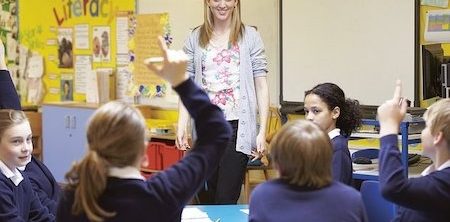The modern classroom has evolved significantly, with innovative teachers increasingly recognizing the educational value hidden within kids animated shows. While these colorful programs might appear to be simple entertainment at first glance, they often contain sophisticated lessons that extend far beyond the obvious educational content. This “hidden curriculum” represents a powerful teaching opportunity that savvy educators are learning to leverage for maximum impact on young learners.
Contemporary animated shows for children are typically developed with input from educational experts, ensuring that the content aligns with developmental stages and learning objectives. Behind the vibrant characters and engaging storylines lie carefully constructed messages about social skills, emotional intelligence, problem-solving, and cultural awareness. By deliberately incorporating these shows into lesson plans, teachers can address multiple learning domains simultaneously while maintaining student engagement.
The concept of using entertainment as an educational tool isn’t new, but the sophistication of this approach has increased dramatically in recent years. Rather than viewing screen time as separate from learning time, educators now understand that quality animated content can reinforce classroom lessons in ways that resonate deeply with young learners. Characters that children love become powerful teaching assistants, modeling behaviors and concepts that might otherwise be difficult to demonstrate effectively.
Emotional literacy represents one of the most significant components of the hidden curriculum in children’s animation. Many shows deliberately incorporate storylines about managing feelings, resolving conflicts peacefully, and developing empathy for others. When teachers discuss these themes after viewing, they help children transfer these lessons to real-life situations in the classroom and beyond. This emotional education is increasingly recognized as crucial for overall child development.
Critical thinking skills develop naturally when children engage with well-crafted animated narratives. The best shows present characters with meaningful problems to solve, encouraging young viewers to predict outcomes, consider alternatives, and evaluate solutions. Teachers can pause at strategic moments to ask thought-provoking questions, transforming passive viewing into active analysis. These discussions help children develop reasoning abilities that transfer to academic subjects across the curriculum.
Cultural diversity appears prominently in many contemporary animated programs, exposing children to different customs, languages, and perspectives. This representation helps normalize diversity for young learners while building respect for cultural differences. Teachers can build upon these elements to create more inclusive classroom environments where all students feel valued and represented. These early exposures to diversity lay the groundwork for more sophisticated multicultural education in later years.
Scientific concepts often feature in animated content, presented through adventurous storylines that make complex ideas accessible to young minds. From basic physics principles to environmental awareness, these shows introduce scientific thinking in contexts that children find engaging. Effective teachers recognize these moments as opportunities to extend learning through hands-on activities that reinforce the concepts introduced in the animated content.
Language development occurs naturally as children absorb the rich vocabulary and varied sentence structures used in quality animated programming. Shows aimed at different age groups carefully calibrate their language complexity, introducing new words in context and often reinforcing them through repetition. Teachers can highlight key vocabulary during viewing and incorporate these words into subsequent classroom activities, strengthening language acquisition.
Moral reasoning develops as children encounter ethical dilemmas in animated storylines. Characters often face choices between right and wrong, allowing young viewers to consider consequences and develop their own ethical frameworks. When teachers facilitate discussions about these situations, they help children articulate their values and understand different perspectives on moral questions. These conversations contribute significantly to character development.
Historical events and cultural traditions often appear in animated content, offering children engaging introductions to important concepts. While simplification is necessary for young audiences, these presentations can spark curiosity about the past and different cultural practices. Teachers can build upon this initial interest, providing additional information and resources that deepen understanding of these topics.
Mathematical thinking emerges naturally in many animated shows through problem-solving scenarios that involve counting, measuring, patterns, and spatial relationships. These practical applications help children understand the relevance of mathematics in daily life. Teachers can point out these mathematical elements and create follow-up activities that reinforce these concepts through hands-on exploration.
Creativity and artistic expression are consistently modeled in animated programming, not just through the medium itself but often through characters who engage in creative pursuits. This exposure helps children value artistic expression and may inspire them to explore their own creative abilities. Teachers can build upon this inspiration by providing opportunities for students to create their own stories, artwork, or animations related to favorite characters or shows.
The development of executive function skills – including focus, memory, and self-regulation – occurs as children follow narrative arcs and character development in quality animated content. The best shows for young viewers create opportunities to practice these skills by requiring attention to detail and remembering information from earlier episodes. Teachers can support this development by asking questions that encourage children to recall and connect information across viewing experiences.
Digital literacy naturally develops as children engage with animated content across various platforms. Teachers can use these experiences to begin conversations about media consumption, helping children become more conscious consumers who understand that someone creates the content they enjoy for specific purposes. These early media literacy lessons establish critical foundations for navigating increasingly complex digital environments.

